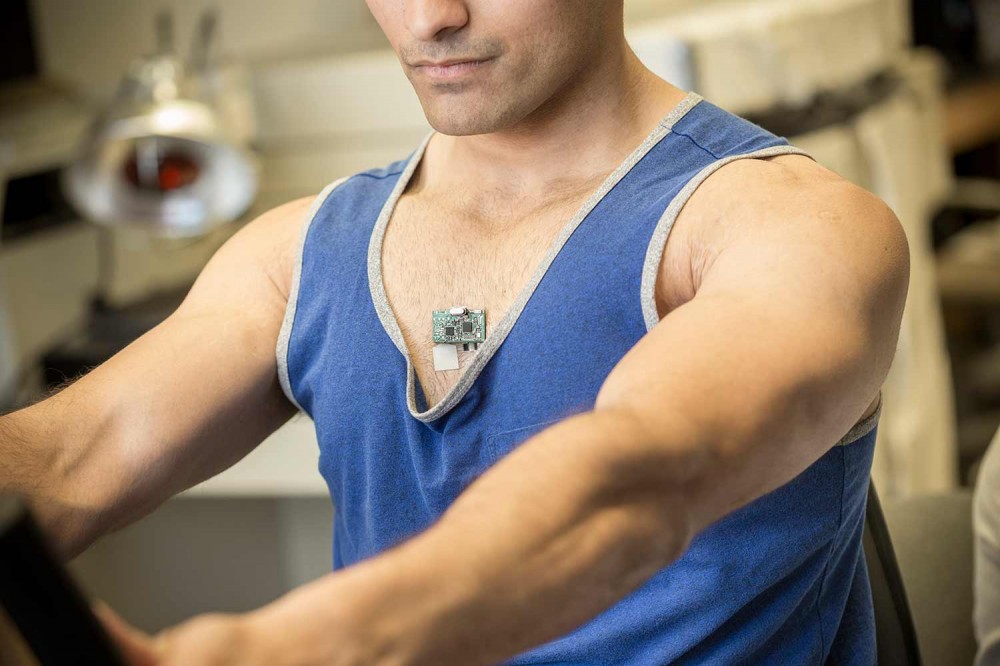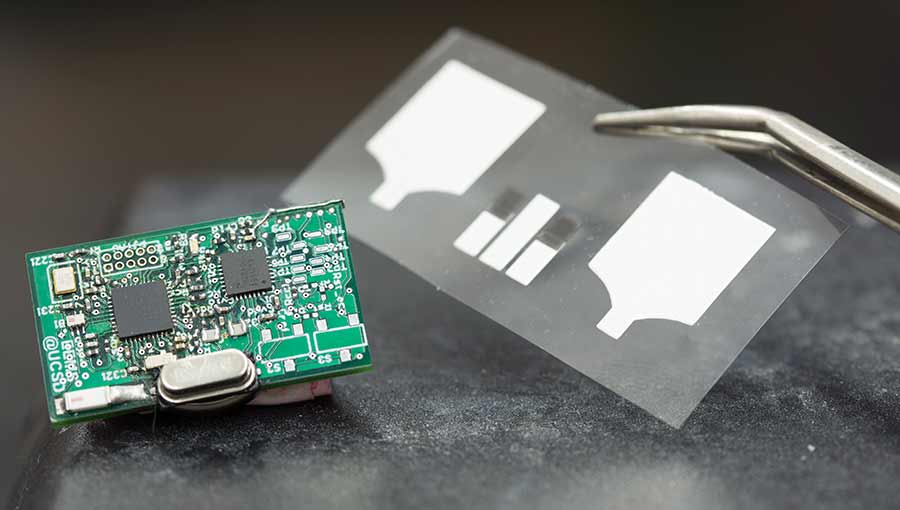
Engineers at the University of California San Diego have created a wearable device that is able to track the biochemical and electric signals of the wearer. This Chem-Phys patch records both electrocardiogram (EKG) heart signals as well as lactate levels which directly relate to physical activity. The device is placed directly on the chest and sends real-time data wirelessly to a smart phone, smart watch or computer. The team says the new tricorder-like technology can be used for tracking athletic progress or to keep a closer eye on those suffering from heart conditions.
The device was created by nanoengineers and electrical engineers at the UC San Diego Center for Wearable Sensors. The apparatus contains flexible sensors and a barely noticeable electronic board and sends data via Bluetooth to both the wearer and their health care providers. Complete information on the study and new device can be found in the recent publication of Nature Communications journal.

Electrical engineering professor Patrick Mercier from UC San Diego Jacob’s School of Engineering was the lead of the project and says the goal was to build a wearable device similar to a tricorder that was able to measure a wide range of chemical, physical and electrophysiological signals at the same time, throughout an entire day. He says their research shows this is the first step to proving this goal to be a not-so-distant reality. Most wearable devices on the market today measure only a single signal and do not measure chemical signals within the body.
Researchers worked hard to bridge this gap by adding heart rate and lactate moderation to this newest device, a feat that has never been accomplished before. These advancements will be very important to athletes who are looking to improve their overall performance, but also holds a promising future for better prevention and management of cardiovascular disease. So far the biggest struggle during the project has been collecting data from more than one signal without them interfering with one another, which took some time-consuming configurations.
The patch for the device itself required screen printing in order to produce a thin, flexible polyester sheet that was safe for application to skin. There is an electrode printed in the center of each patch that senses lactate levels and two EKG electrodes enclosing it. A layer of soft water-repelling silicone rubber was added to the patch to keep sweat from the EKG electrodes, which would interfere with results. The sensors are connected to a small circuit board which comes with a microcontroller and a Bluetooth Low Energy chip to transmit data.

Patch testing was done on three male subjects who wore the device near the base of their sternum while completing at least 15 minutes of intense activity. Two of the three subjects wore a heart rate monitor as well. The heart rate data was very similar to the information picked up by the new gadget and lactate biosensor results were also very close to previously collected data during other workout studies.
As of now, researchers are focusing on improving how the patch and the board are connected to one another. They also plan to add sensors that will target new chemical markers, like magnesium and potassium, as well as other vital signs. Researchers are excited to study data from the two signals analyze it to see how they correlate with each other.



